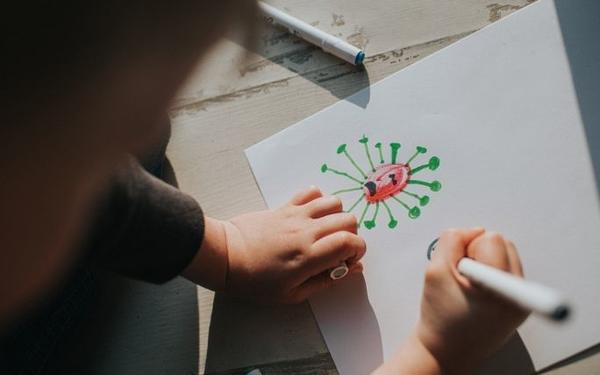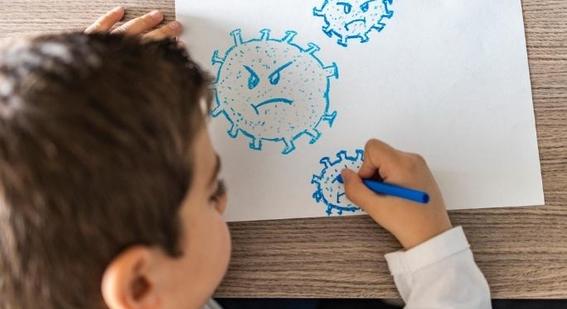The UK learning gap: closing the gap in education
In this blog post, we look at how Covid-19 has affected the education system and increased the learning gap between school pupils - and consider how we can go about closing the gap in education.

Closing the gap in education has never been a more pressing problem. In September 2020, all schools in the UK reopened after being forced to close for several months due to Covid-19 (schools in Scotland reopened in mid-August) - and the gaps between the most disadvantaged students and the least are now clear.
Here, we will be discussing the impact Covid-19 has had on the education system and the UK learning gap - and asking ourselves how we can bridge this gap in education before it's too late.
Covid-19 and the gap in learning - how will it change?
This is a tense time for many education systems around the world, as new hygiene systems and classroom routines are put into place and children are welcomed back into the classroom.
The successful reopening of schools is a moment of critical importance in closing the gap in education, not just because it is vitally important for children’s futures, but also for what schools represent:
"… the return of children [to school] can be one of the most effective ways to demonstrate a return to normalcy to the local population and to help the government rebuild the social contract."
Do Natural Disasters Affect Human Capital? Baez, de la Fuente, Santos; Institute for the Study of Labor, 2010.
Many students in the UK have been out of the classroom for close to six months. Schools remained open for the children of key workers and those most at risk, with a variety of different models of remote learning for the majority.
The questions of the past few months have moved from ‘How can we teach remotely?’, to ‘Is it safe to reopen schools?’, and finally, ‘How will this impact the UK learning gap?’.
While it is hoped that the return to school will mark the further return of normal life, the scarring from Covid-19 will shape education policy and practice for many years to come.
What the early evidence of the current UK learning gap tells us
The National Foundation for Educational Research released The Challenges Facing Schools and Pupils in September 2020 to coincide with the UK return to school. The report analysed responses from teachers and head teachers in primary and secondary state schools in England, highlighting some of the known – or anticipated – aspects of the learning gap as a result of this period of disruption:
- Nearly all teachers (98%) report that their pupils are behind where they would normally expect them to be in their curriculum learning at the end of the 2019/20 school year.
- Teachers estimate that their pupils are three months behind, on average, with primary teachers estimating a larger learning gap than secondary teachers. (Compare this with the World Bank’s global estimate that students have lost 0.6 years.)
- Teachers report covering, on average, only 66% of the usual curriculum during the 2019/20 school year.
The performance gap in education between disadvantaged pupils and their peers has widened. Respondents estimated that this gap had increased by 46% within their schools, but the report’s authors note that this is likely to be an underestimate as it does not account for differences between schools.
The gap opening up between disadvantaged students and their peers is concerning enough on its own, but this comes on the heels of a pre-Covid report from the Education Policy Institute that found the disadvantage gap in UK schools had ceased to narrow and may be growing for the first time in five years. Closing the gap in education and learning gaps in the current system must become a priority, before they become even more difficult to amend.
The current education policy conversation in British politics is centred around whether the timing of the 2021 summer exam series should be moved to allow GCSE and A level students more time to cover the remaining curriculum.
This is no simple consideration: the UK’s highly selective Higher Education system will likely be struggling with capacity due to the lifting of student number caps in 2020’s unprecedented A level awarding season. With high numbers of deferred places already filled, exam boards will be pushed to turn around marking and moderation in record time and questions about grade boundaries for disrupted education will inevitably need to be answered. It is clear that there is a desire to get children back on track with their education as soon as possible, but is this realistic? Looking at evidence of learning gaps from other crises leading to school closures may help us find the answer.
What the evidence can tell us about the depth of the learning gap
There is a frustrating problem with evidence on learning loss and identifying learning gaps in crises: there is a dearth of high-quality data.
A rapid-response research paper looking at the impact of Ebola commented: ‘Although the literature generally concurs with ACAP’s assessment that “knowledge loss, reversal in literacy and interruption of the development of children was the main consequences of school closures” there is no empirical evidence that learning outcomes suffered as a result of the Ebola outbreak’ (Hallgarten, 2020). (Covid’s silver lining may be that there has been a significant rise in effort on behalf of the research community to capture data during the crisis.)
As a consequence, we can look at comparable case studies on learning gaps, but must acknowledge that there are limits to how directly applicable they are to the current circumstances.
Learning gap in Pakistan: a case study
A powerful earthquake in Pakistan in 2005 led to school closures lasting an average of 14 weeks for schools within 20km of the earthquake. (Note that while UK schools have been shut for close to 6 months, when half-terms and the summer holidays are accounted for the actual school time missed is close to 14 weeks.)
While the crisis did not result in a drop in school enrolment, researchers identified learning gaps based on test scores of children affected and unaffected by the earthquake four years after the crisis:
"Nevertheless, independently measured test scores of children living within 10km from the fault reported test scores were 0.24 standard deviations lower than for children living 40km away. This difference does not vary by age, and the gap is equivalent to about 1.5 school grades: the average 15-year old has completed 5.6 grades and children linearly gain about 0.17 standard deviations in performance per grade level on our test. We therefore have evidence across the entire age range that persistent developmental deficits can arise in young children due to a large, albeit “temporary” shock."
Human Capital Accumulation and Disasters: Evidence from the Pakistan Earthquake of 2005; Andrabi, Daniels, Das; Research on Improving Systems of Education (RISE), 2020.
It is worth repeating that these differences were still present in students’ test scores four years after the disruption. The return to school and the task of addressing learning gaps in education is a sensitive operation, and care is needed to avoid the risk of exacerbating this scarring.
In the case of Pakistan’s earthquake disruption, it was observed that a lack of adjustment to the curriculum for crisis-hit students made closing the gap in education worse, compounding the learning loss with too-difficult content.
We must start bridging the gap now
The reopening of schools is the first step in a return to education bridging the learning gap. We must be mindful that closing the gap in education introduced by Covid-19 is likely to be the work of years, not months.
While the spotlight in the short-term will be on those students most immediately and visibly affected – students approaching high-stakes exams or graduating from mandatory education to higher education or the workplace – we must not underestimate the potential impact on young children.
There is compelling evidence (meta-analysis; podcast; book) to show that high-quality early education has a lasting impact on children’s learning career. The converse is sadly true.
The future of the learning gap - what happens next?
The legacy of Covid-19 will influence education policy and practice for the next decade. Regardless of whether the virus is eradicated, an effective, affordable mass vaccine becomes available, or we find a way to live with the virus in a new normal, the evidence overwhelmingly points to a significant long-lasting impact from this period of disruption.
The current cohort of students in schools is already being labelled Generation Covid, with the consequences of this pandemic predicted to echo through the rest of their lives, even beyond exacerbating the learning gap.
As we continue this series of blog posts, we will look more closely at the nature of the disruption and the ways in which it could affect children, before turning to look at what we can do in the here and now to try to minimise the long-term consequences of Covid-19 in education.
The unprecedented disruption of 2020 could have the greatest long-term impact on the class of 2030 in terms of the learning gap and the difficulty of closing this gap in education. As we will see in the next post, this is of particular concern for the 193 countries that signed up to the UN’s Sustainable Development Goals.




